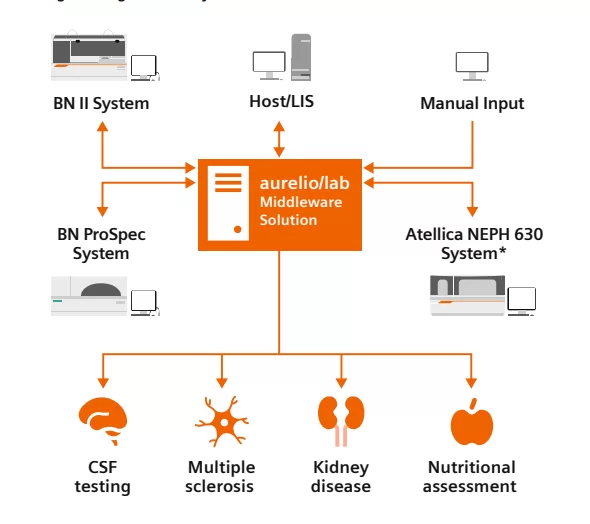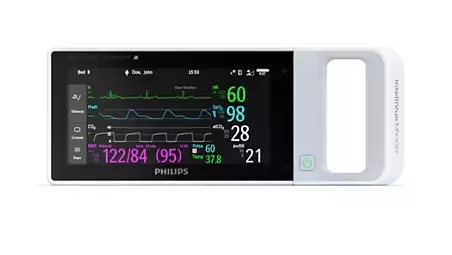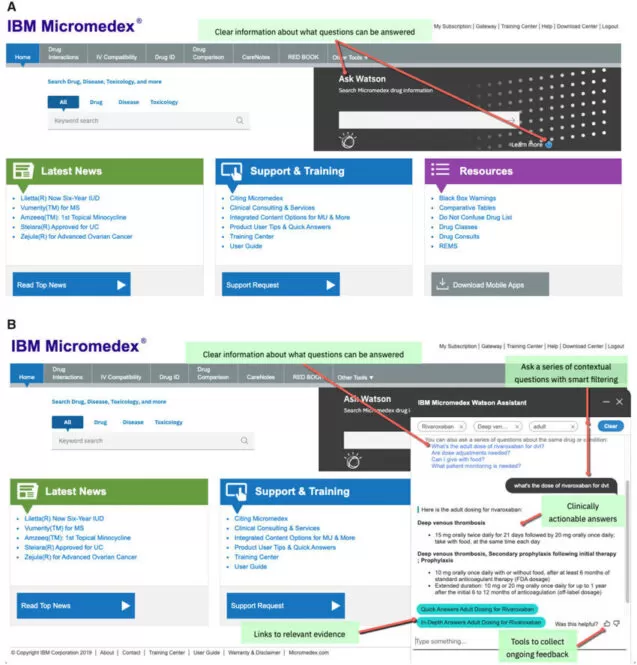Clinical Decision Support Systems (CDSS) first altered the healthcare landscape back in the 80s, and have experienced rapid evolution ever since. The decisions of clinicians are often life-saving, or at least life-changing, so any part of the process that could be augmented by the machines is vital.
In this blog post, we make a comprehensive overview of modern-day CDSS, its use cases, proven efficiency, the types and areas of their applications, and other aspects. We will also explore the available options from the leaders of the market and beyond, discuss the challenges and limitations CDSS have, and give our readers hints, or, rather, actionable insights on how to choose CDSS for your medical facility and according to your needs.
CDSS: Types, Tasks, and How They Work
To say that the term “Clinical Decision Support Systems” unites a lot of different software tools is an understatement. It could be used for a variety of tasks: from cost containment to diagnostics support, and come in all shapes and sizes.
CDSS could be a standalone program, an integrated part of a huge Electronic Health Record System (EHR), or other types of software. They could be tackling a single issue, working on multiple complex functions, and covering a variety of processes across several modules.
Usually, modern CDSSs come from powerful computing engines, advanced algorithms, and high-class tech, such as cloud computing. They haven’t changed much over the decades on the architectural level, so they’re still similar to the early expert solutions introduced back in the 70s and 80s.
Under the hood, judging by the ways they come to a conclusion, there are two types of CDSS: knowledge-based and nonknowledge-based ones.
Knowledge-based CDSS
These are systems that are rule-based and use “if-then” logic to generate recommendations Knowledge-based CDSS use the data they got on the diseases, treatments, and patient data, and based on it, assist healthcare professionals in decision-making.
In turn, they have these sub-types among them.
Rule-Based Systems
Systems of such kind use a set of predefined rules to make decisions or provide recommendations. For instance, a rule-based CDSS might have the algorithm of a kind: “If the patient has a fever, and the white blood cell count is abnormally high, then recommend antibiotics to treat possible infections.” This is a real example from the rule-based CDSS for the diagnosis of malaria.
Bayesian Networks
These networks make decisions based on probability from the variables they have in the database. The probabilities are calculated based on available data and their prior knowledge. These networks assess the likelihood of a patient having a disease based on the symptoms and test results.
Non-knowledge-based CDSS
Non-knowledge-based CDSS utilize Machine Learning (ML) and data mining to generate recommendations based on the identified patterns. The systems make conclusions based on historical patient data, therefore ML algorithms for these systems are trained on this data.
As for data mining, there are techniques that are used to discover hidden patterns in large datasets.
CDSS’s Major Areas of Application
As we highlighted and described the types of CDSS, it’s only logical to dive deeper into the issue of where those systems apply for the most part. The short answer to that is “just about any healthcare area where the decisions can be made”. However, let’s be more specific.
Diagnosis Management
There are special so-called medical diagnosis systems (MDSs). Their main functionality is to compare the information on a specific patient’s condition with the database they use and come up with a list of possible diagnoses.
If we have to come up with specific examples, there are solutions that use deep learning technology for diagnostic imaging. Usually, it focuses on a specific area: lung deficiencies, some types of cancer, or intracranial hemorrhage. Those AI-based programs do not make the final conclusions about the problem, but they’re perfect for alerting the doctor about a certain potential patient’s condition.
Drug Management
Studies show that CCSS could help a great deal with drug monitoring and correct dozing with the help of computerized recommendations, reduce the time patients spend in the hospital, and conduct the treatment faster through timely dosage adjustments.
More than half of medication errors happen during the prescribing stage, and almost half of the studies about CDSS systems prescribing drugs show that they reduce the number of errors while being in this critical stage. Eliminating risks that come as a human factor reduces the number of errors by a mere 75%.
Besides, as CDSS has patient data, such as weight, age, allergies info, and current prescriptions, it calculates the medication dosage accurately and instantly considering all these factors.
Chronic Disease Management
CDSSs are widely used for managing chronic conditions such as diabetes or hypertension, as they track patient data for long-term care plans.
The analysis of fourteen studies revealed that diabetes was the most frequently explored disease (42.8%) by the systems, and the predominant approach was diagnostic. In terms of data sources, CDSS databases were extensively used (85.7%), with sensors (42.8%) and self-reporting (28.6%) also considered. That means there are a lot of systems involved in chronic disease management, and this area is being extensively researched.
Surgical Decision Making
CDSS assists surgeons in preoperative planning and intraoperative decision-making. The systems have been deployed in many hospitals due to the absence of systematic measurement of patients’ compliance in the healthcare system.
By that, we mean compliance to treatments (adherence to meds) that used to be unmeasured. More and more institutions focus on the design and development of decision-support prototypes in surgical care to measure process compliance in regard to infection control.
Public Health Surveillance
CDSS used for monitoring disease outbreaks and predicting trends in public health data. The Canadians have introduced the Global Public Health Intelligence Network (GPHIN). GPHIN has created a new monitoring technique that serves as a national outbreak notification while creating new possibilities for global outbreak response.
This is especially relevant as we have fresh memories of the most recent pandemic. As we have more understanding of factors driving infectious disease emergence, and improved communications for public health surveillance, we can further enhance global surveillance.
Key Providers of Clinical Decision Support Software
As there are plenty of systems available to medical facilities and practitioners worldwide, it’s only fair to have a look at the leaders of the sector. Siemens, Philips, IBM, and many others have invested big in creating the offerings in decision support systems.
Core Product: Protis Data Management System with Protis Assessment Software (optional module)
Key Features: The software consolidates patient test results from different platforms into graphical reports. Protis Assessment Software offers knowledge-based decision support for various medical conditions including brain and spinal cord issues, kidney function evaluation, cardiovascular risk estimation, iron and anemia assessment, and nutritional assessment. It provides easy-to-understand graphical reports and interpretations, saving time and reducing manual work for physicians.
The Architecture of Protis
Source: siemens-healthineers.com
Philips Healthcare
Core Products: Horizon Trends, ST Map, Event Surveillance, ProtocolWatch Sepsis, Histogram Trends
Key Features: The aforementioned tools are integrated with Philips’ IntelliVue monitors and offer real-time monitoring of vital signs, specific ECG segments, multiple clinical parameters, sepsis criteria, and long-term patient measurements. They provide alerts for critical deviations and help medical staff in making quick decisions based on patient data.
IntelliVue Patient Monitor
Source: usa.philips.com
IBM Watson Health
Core Product: Micromedex Clinical Knowledge
Key Features: Micromedex offers evidence-based clinical decision support, including drug management (medication interactions, dosage calculation, alternative therapies), Disease and Condition Management (quick access to treatment information), and Toxicology Management (identifying potential poison sources).
IBM Watson Health also collaborates with DynaMed to provide a combined platform for clinicians, addressing medical questions across specialties.
Screenshots of IBM Micromedex
Source: researchgate.net
Those are just three options of many existing, so we’re not taking any sides and not giving away the pieces of advice. We do want to leave you with some takeaways, that’s why we need you to have a look into the net part of the blog post.
Which Options Does My Company/Hospital Goes With?
In the realm of Clinical Decision Support Systems (CDSS), each type and brand offers its unique advantages. However, it is essential to conduct a thorough risk-benefit analysis before making a selection.
Given the specific nature of CDSS development and integration, a preferable approach involves engaging a remote IT team in the creation of decision support software.
At Elinext, our team of experts is proficient in developing customized CDSS solutions tailored to your specific requirements. We offer the following services:
Custom CDSS Development: We can craft a CDSS for your healthcare facility from scratch, designed with scalability in mind to accommodate future needs.
Seamless Integration: We ensure seamless integration of the CDSS with your existing Electronic Health Records (EHR) systems, ensuring a cohesive digital ecosystem.
Performance Monitoring: We establish robust mechanisms to monitor the system’s performance, guaranteeing its efficiency and reliability in real-time usage.
With Elinext, you can count on a dedicated team to create and maintain a cutting-edge CDSS tailored to your healthcare needs.
Instead of Conclusion: Challenges on Your Back in CDSS Choice and Implementation
There is very little doubt that Clinical Decision Support Systems (CDSS) serve well in modern-day healthcare, yet they come with inherent risks and challenges.
Too Many Alerts
One major concern is alert overload; a CDSS might generate an excessive number of alerts and recommendations, leading caregivers to ignore them, regardless of their importance. It is crucial to select a solution that allows for the prioritization of critical notifications, preventing alert fatigue. That means the system should be fine-tuned, and you need professionals to do that for your hospital, which leads us to…
Integration Challenges
Having all the necessary features is not enough. A CDSS solution will not be beneficial if it cannot seamlessly integrate with the existing information system. Compatibility with Electronic Health Records (EHR), or easy workflow integration is essential. Ensuring the chosen solution aligns with the current system is vital for optimal functionality.
Interoperability Issues
Even after integration, CDSS solutions might struggle to effectively communicate with other modules due to diverse healthcare record standards. The adoption of Fast Healthcare Interoperability Resources (FHIR), the latest HL7 format for healthcare data exchange, has improved this situation for some of our clients.
To ensure smooth data exchange, it is essential to implement FHIR standards throughout the healthcare organization and with external systems.
Long story short
The CDSS choice, development, and implementation are very hard tasks to fulfill, yet they bring so many benefits to the table, that one should strongly consider them for their hospitals. Elinext is a healthcare software development company, so we’re no strangers to designing, implementing, evaluating, and maintaining the work of Clinical Decision Support Systems. Contact us to discuss our cooperation opportunities.












